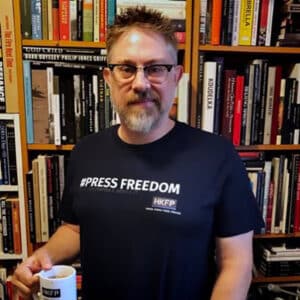Didier, comic book artist. Central African Republic. "As the civil war broke out, Didier witnessed many scenes of violence around Bangui. He began to record the events in comic books. Didier produced two volumes of The Tempest of Bangui, which docu...



